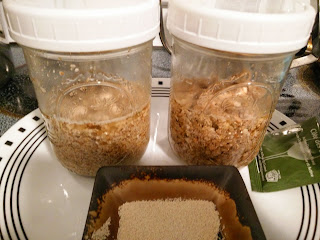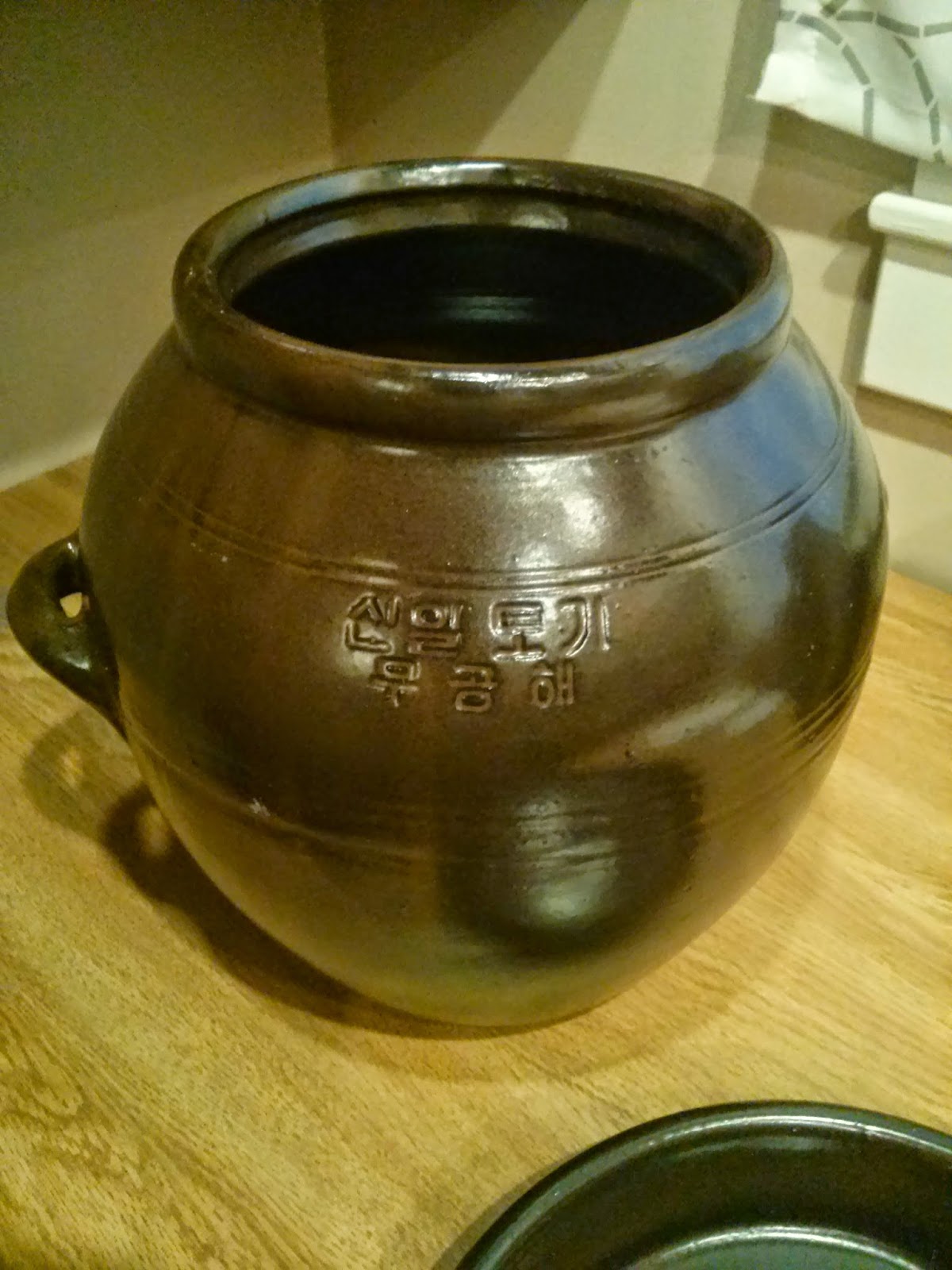부의주 막걸리 (동동주) | Buuiju Makgeolli Pt. 1
Here is a step-by-step guide for making Buuiju Makgeolli (동동주)
Monitor the temperature throughout the cooling process with a thermometer. This reads 29 C, so it's not done cooling yet.
At 25.7 C I think it's a safe temperature to mix the rice with the sugok.
Scrape the rice into a bowl with a spatula. It helps to wet the spatula before working with the rice so it doesn't stick too much. You can also use plastic gloves, if that's your thing.
Pour the sugok into the cooked rice and mix. The recipe call for a 30 min. mix by hand. If you have a standing mixer you can probably use that to reduce the mixing time, but mix on a low speed.
This is what the mixture looks like at the beginning of mixing...
...and this is what it looks like after 30 min. of mixing. If the thought of mixing for 30 minutes seem daunting to you, try mixing while watching a movie or some TV. The time will go faster that way, but you might not mix as well.
Transfer the mixture to your fermentation container and add the water mentioned in the ingredients list above. I used bottled mineral water, which has worked well for me in the past.
Lightly cover the top of the jar with a piece of plastic wrap. This is to keep out dust and to prevent things from falling inside, so the seal shouldn't be airtight. I heard that hanji was traditionally used to seal the top of the jar, which is a breathable paper material. You can also use a clean cloth, preferably some kind of linen.
Finally, place the lid on top, if there is a lid, and put the jar in a cool, dry location out of sunlight. It should ferment for 3~5 days, depending on temperature, rate of fermentation, etc.
Buuiju makgeolli is commonly known as dong-dong ju. "Dong-dong" is onomatopoeia in Korean for floating. This type of makgeolli is often characterized by the floating bits of rice that are left in the finished drink.
Ingredients:
찹쌀 sticky rice
물 water
누룩 nuruk
Starting makgeolli is a multi-step process. There isn't room for a "set it and forget it" mentality, so if that is how you usually cook make sure to keep track of the time throughout the process. A summary of the steps is as follows: First, prepare the sugok and rice as they need to soak and/or cool to room temperature. Second, cook and cool the rice. Third, mix sugok, rice, and water together. Last, place the mixture in a fermentation vessel. I will go over each step in more detail below.
First, measure the ingredients to fit your fermentation vessel. Traditionally, a brown clay pot is used, but you can also use glass or plastic jars/jugs. I've been told to stray away from metal containers, because the fermentation may react with the metal. Personally, I don't like using plastic containers for fermentation either, but at least one person has been successful in doing so.
With that in mind, the original recipe calls for 5 L (4 kg) sticky rice, 3 L water, and 2 L sugok (1 kg nuruk). This time I used 400 g sticky rice, 500 ml water, and about 100 g nuruk.
The water mentioned above does not include the amount needed to make sugok or to cook the rice.
수곡 Sugok preparation:
Boil about 500 ml of water and let it cool to room temperature. Once cooled, soak the nuruk in the water for 3 hours. After 3 hours, drain the water and keep the soaked nuruk. This is the sugok.
고두밥 Rice preparation:
Wash the rice and soak in water for at least 3 hours before cooking. Then, cook the soaked rice in a rice cooker or steamer until it is just cooked. Try not to overcook it to the point where it becomes mushy.
Spread the cooked rice on a ventilated surface to cool. It should cool to 25 C.
The wooden mats used to make kimbap or sushi rolls work well for cooling the rice. if you are using these mats, it helps to soak them in water first. Also, place something underneath the mat to elevate it off of the work surface. This will facilitate cooling.
Monitor the temperature throughout the cooling process with a thermometer. This reads 29 C, so it's not done cooling yet.
At 25.7 C I think it's a safe temperature to mix the rice with the sugok.
Transfer the mixture to your fermentation container and add the water mentioned in the ingredients list above. I used bottled mineral water, which has worked well for me in the past.
Finally, place the lid on top, if there is a lid, and put the jar in a cool, dry location out of sunlight. It should ferment for 3~5 days, depending on temperature, rate of fermentation, etc.
Check the surface in about 12 hours to see how it is going. If there are signs of mold, you may want to try again. You can still make decent makgeolli after a little mold has formed, but mold very early in the process is not a good sign. If this happens and you need to try again, I recommend cleaning your tools more thoroughly the second time around.
Questions and comments are welcome.















Comments
Post a Comment